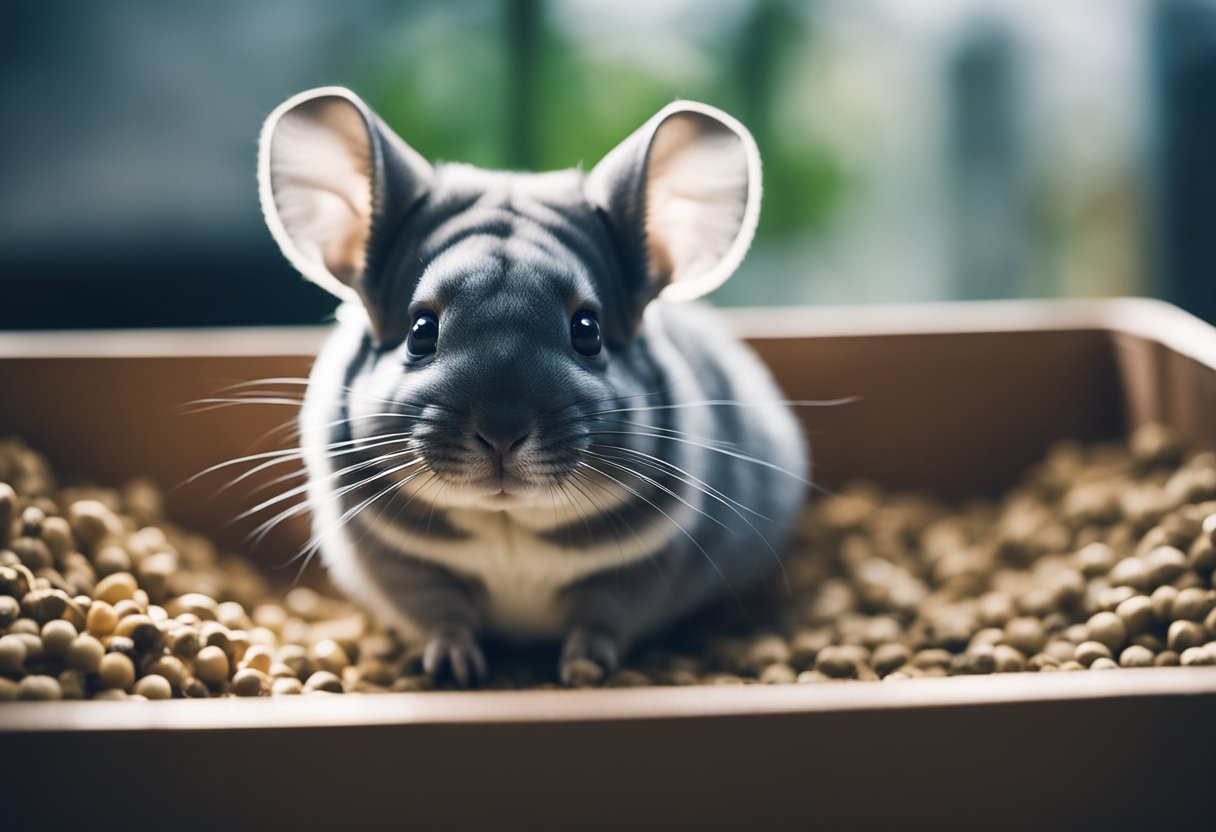Chinchillas can indeed be potty trained with the right approach. By starting at a young age and using consistent training methods, many owners find success in teaching their pets to use a litter box. This not only helps keep their living area clean but also makes caring for your chinchilla much easier.

Understanding your chinchilla’s natural behavior is key to effective training. With patience and observation, you can identify where your chinchilla prefers to go and set up the litter box in that spot. This method will encourage your pet to use the designated area rather than the whole cage.
Keeping your chinchilla’s environment clean and comfortable is important for successful potty training. While there may be challenges along the way, regular reinforcement and love can make the process smoother for both you and your furry friend.
Key Takeaways
- Chinchillas can be successfully potty trained with consistent methods.
- Knowing your chinchilla’s habits helps in proper litter box placement.
- Clean environments support better training outcomes.
Understanding Chinchilla Behavior

Chinchillas have unique habits and behaviors that influence potty training. By learning about their natural instincts and signs of adaptation, you can improve your approach to training.
Natural Habits
In the wild, chinchillas often select specific areas to relieve themselves. This natural behavior can be useful for potty training, as it indicates that they can be taught where to go.
You should observe your chinchilla to identify its preferred bathroom spots. By placing a litter box in these areas, you increase the chances of successful training.
Chinchillas are clean animals and usually avoid soiling their sleeping or eating areas. They will appreciate a clean space, making it easier for you to maintain their environment and encourage them to use the designated bathroom.
Signs of Learning and Adaptation
As your chinchilla begins to learn, watch for certain signs that show it is adapting to potty training. One indication is frequent visits to the litter box. This shows that your pet is starting to recognize it as a bathroom area.
You may also notice your chinchilla using the box after eating or upon waking up. These behaviors suggest that it is developing a routine.
Positive reinforcement can play a crucial role in this process. Be sure to reward your chinchilla immediately after it uses the litter box correctly. Rewards can be treats or praise, which helps reinforce the behavior. With time and patience, your chinchilla can learn to adjust to this new habit.
Training Your Chinchilla

Training your chinchilla is a rewarding process that can lead to a cleaner environment and a stronger bond with your pet. Key factors include establishing a routine, choosing the right equipment, and using effective positive reinforcement techniques.
Establishing a Routine
Setting a consistent schedule is essential for potty training your chinchilla. Start by observing when your chinchilla typically urinates. This will help you anticipate their bathroom needs.
Create a routine by taking your chinchilla to the litter box at the same times each day. For example, you might take them after meals or when they wake up.
Consistency is vital. Repeating these actions daily helps your chinchilla understand when and where to go. Avoid disruptions in the schedule to prevent confusion.
Choosing the Right Equipment
Selecting the proper equipment can greatly enhance your training success. You will need a litter box that is easy for your chinchilla to access. A small, low-sided box is often ideal.
Use chinchilla-safe litter, like aspen shavings or paper-based products. Avoid clay or clumping litters, as they are harmful to chinchillas.
Place the litter box in the area where your chinchilla usually urinates. This aligns their natural habits with the litter box, making it easier for them to adapt.
Positive Reinforcement Techniques
Using positive reinforcement helps your chinchilla learn faster. Reward your chinchilla immediately after they use the litter box.
Use small treats or praise to encourage the desired behavior. The timing of your reward is crucial for effective training.
Keep training sessions short and fun. Gradually increase the time spent in the litter box area. Over time, your chinchilla will begin to associate the box with rewards and will be more inclined to use it.
Resources

Here are some helpful resources for potty training your chinchilla.
- Potty Training Guides
- Litter Box Options
- Look for a suitable chinchilla litter box that fits well in their cage. Check out recommendations from:
- Training Tips
- Start training at a young age and observe your chinchilla’s behavior. For more tips, visit:
- Common Challenges
- It’s important to know that potty training can have challenges. For insights into these, see:
These resources provide valuable information to help you successfully potty train your chinchilla.
Frequently Asked Questions

Potty training a chinchilla can involve specific methods and techniques. Understanding these will help you successfully train your pet to use a litter box effectively. Here are some common questions about litter training chinchillas.
What is the recommended method for litter training a chinchilla?
Start by placing a litter box in a corner of the cage where your chinchilla tends to go. Use some of the dirty bedding to attract them to the box. Gradually introduce fresh litter on top.
How can I encourage my chinchilla to use their litter box consistently?
Consistency is key. Show your chinchilla where the litter box is each time they use it. Reward them with treats or praise when they go in the box to reinforce the behavior.
What are effective techniques to prevent a chinchilla from urinating outside its cage?
Ensure the litter box is easily accessible and clean. Regular cleaning helps prevent accidents. You can also limit your chinchilla’s space outside the cage until they are more reliable with their training.
Are there specific types of litter that work best for chinchilla litter training?
Use paper-based or aspen bedding, as some litters can be harmful. Avoid clay or clumping litters since they may cause health issues. Choosing safe bedding is crucial for your chinchilla’s well-being.
How long does it typically take to litter train a chinchilla successfully?
Training can take several weeks to a few months. The timeframe can vary based on your chinchilla’s age, personality, and your training consistency. Patience is important as every chinchilla learns at their own pace.
What common mistakes should be avoided when potty training chinchillas?
Avoid punishing your chinchilla for accidents. Negative reinforcement can lead to fear and stress. Also, don’t change the litter type frequently, as this can confuse them during training.

